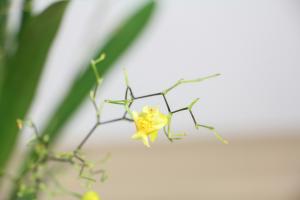Introduction
Water movement in plants is a crucial process that enables various functions including photosynthesis, growth, and survival. This process is called the transpiration stream and involves the transport of water and solutes from the roots to the leaves. Understanding what makes water move in plants is essential to comprehend the growth, survival, and productivity of plants. In this article, we will examine the various mechanisms that contribute to water movement in plants.
The Role of Root Pressure in Water Movement
Root pressure is a physical force that facilitates the movement of water from the roots to the stems and leaves. Root pressure is generated by the accumulation of mineral ions in the root cells, which creates an osmotic gradient between the root cells and the soil. This gradient facilitates the movement of water into the root cells through the process of osmosis. As the root cells absorb water, the pressure in the root system increases, pushing water upwards through the xylem.
The Significance of Transpiration in Water Movement
Transpiration is another critical mechanism that contributes to water movement in plants. Transpiration is the process by which water evaporates from leaf surfaces, creating a negative pressure gradient that pulls water upwards through the xylem. This creates a tension force that facilitates the movement of water from the roots to the leaves. Transpiration is essential because it allows plants to regulate their internal water balance, prevent wilting, and facilitate the uptake of nutrients.
The Role of Cohesion-Tension Theory in Water Movement
Cohesion-tension theory is a mechanism that explains how water moves through the xylem, from the roots to the leaves. This theory states that water molecules have a cohesive force that allows them to stick together. As water is pulled upwards due to transpiration, the cohesive force of water molecules creates a tension force that pulls the water column upwards through the xylem. Cohesion-tension theory is crucial because it explains the driving force behind the transpiration stream.
The Effect of Environmental Factors on Water Movement
Environmental factors play an essential role in regulating water movement in plants. For example, temperature, humidity, wind, and sunlight can all affect the rate of transpiration in plants, which can, in turn, impact water movement. Higher temperatures and lower humidity increase the rate of transpiration, which increases the tension force in the water column, facilitating water movement. On the other hand, windy conditions increase transpiration rates, but also lead to water loss from the plant, reducing overall water movement.
Conclusion
Water movement is a critical process that contributes to the growth, survival, and productivity of plants. Understanding the various mechanisms that contribute to water movement in plants is crucial for improving agricultural productivity and plant survival in different environments. By understanding the role of root pressure, transpiration, cohesion-tension theory, and environmental factors, we can develop strategies for optimizing water uptake and minimizing stress to improve plant productivity and resilience.

 how many times do yo...
how many times do yo... how many planted tre...
how many planted tre... how many pine trees ...
how many pine trees ... how many pecan trees...
how many pecan trees... how many plants comp...
how many plants comp... how many plants can ...
how many plants can ... how many plants and ...
how many plants and ... how many pepper plan...
how many pepper plan...































